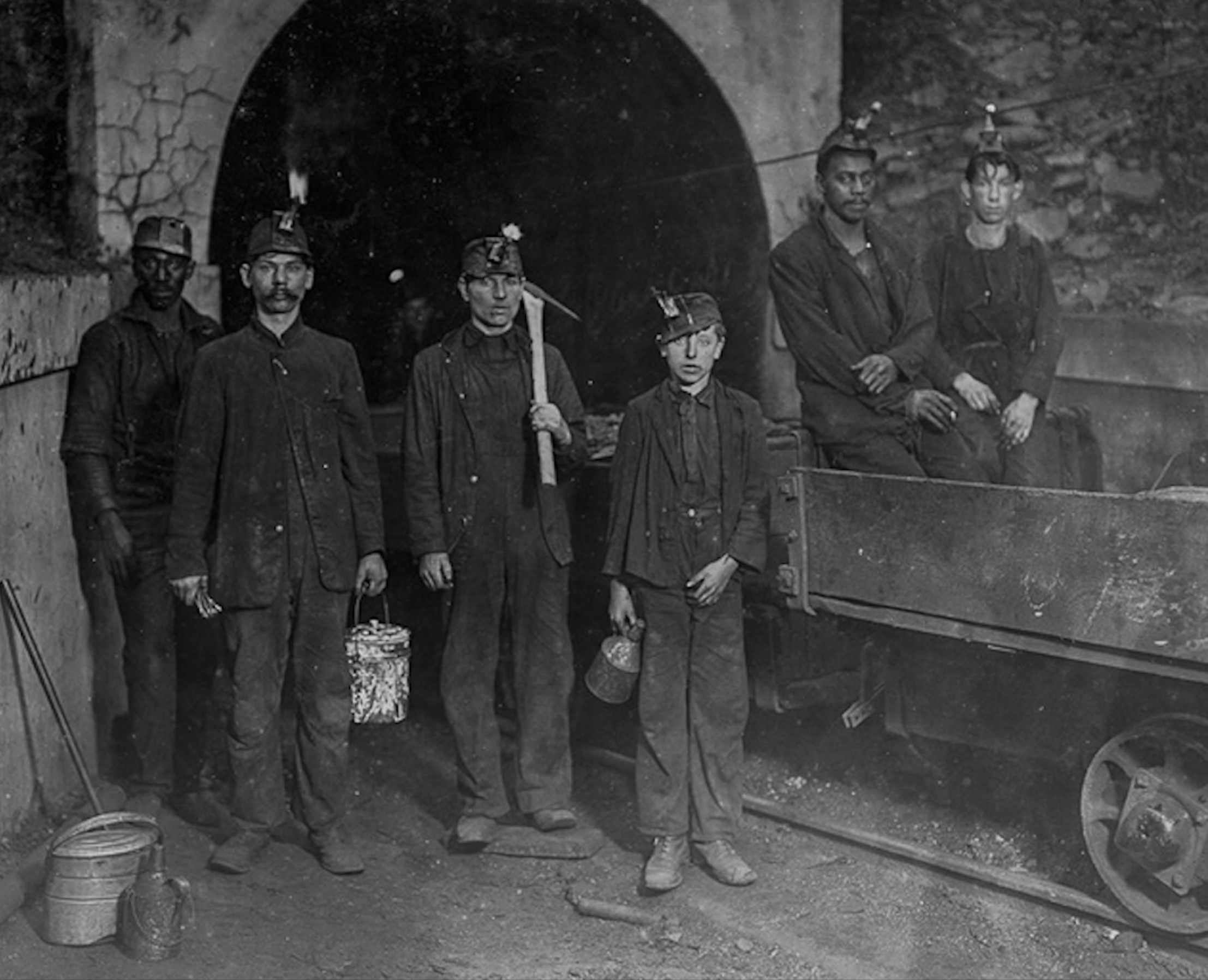Based on Articles by the Zinn Education Project & Southern Crossroads.
The Battle of Blair Mountain was, in the words of the Zinn Education Project, “the largest example of class war in U.S. history. It was fought over the course of five days in 1921 by 10,000 coal miners” in West Virginia. The mining conditions were brutal enough to unify miners across racial and ethnic backgrounds, including Black and White American miners, as well as marginalized European immigrants.
Many of these diverse men were veterans of World War I. When their unionization efforts were met with mass evictions of mining families and outright murders at the hands of the mine owner’s personal police forces, the miners armed themselves not only with rifles but machine guns… and then marched on the police. The mining owners pulled together a 3,000-person private army, and dug in along the ridge of Blair Mountain to face off with the miners.
In response, the miners formed “an effective military strategy. They gained the ridge at one location and established a standard military operation that included a command center, a rear guard, and a perimeter.” According to the New York Times, the rebel army of miners “commandeered passenger trains, cut telephone wires, looted coal company stores of arms and ammunition; and executed two alleged company spies.”
During the long mining struggles leading up to this showdown, White “union organizers and officials worked diligently to address the civil struggles of Black miners. For instance, Black miners served in a wide range of union political positions, and if the union would not have recognized this and other fundamental concerns of Black civil struggles, they would have had a much harder time uniting with Black miners. This does not mean that Black miners did not still face significant discrimination, but there was a large amount of progress as many racial lines were crossed . . . Throughout the campaign Black miners served as commanders and logistics officers. There is even one instance of a Black miner leading a troop of fighters to the front. The majority of Black soldiers in WWI were not allowed to be in combat, and so the fact that they were armed and leading white troops at Blair Mountain is an important historical milestone . . . All of this enabled the miners at the Battle of Blair Mountain to enact a degree of solidarity that was so strong it took three regiments of federal troops to stop it. This did not occur through simple class solidarity; instead the everyday interests of white, Black, and immigrant miners were woven into the larger struggle.”
“The true lesson of Blair Mountain is that when people come together in a way that genuinely attempts to integrate different struggles, one of the most powerful social forces for change can be formed. When poor white, Black, and immigrant people work together, that is what truly scares people in power. As stated above, this mix of racial, ethnic, and class solidarities was not perfect. But it was something unique for the time, and its effect can best be summed up by a white miner who fought in the battle: ‘I call it a darn solid mass of different colors and tribes, blended together, woven together, bound, interlocked, tongued and grooved together in one body.’”
The Battle of Blair Mountain is also where the term “redneck” comes from. As Southern Crossroads – which works to organize White southerners for racial justice – writes, “Real rednecks know that the term comes from the legacy of white coal miners in West Virginia who wore red bandannas [to signify they were with the union] and joined with their Black comrades to rise up against the coal company during the Battle of Blair Mountain in 1921.” Southern Crossroads seeks to reclaim this legacy for the White South today, using the hashtags #ReclaimRedneck and #SpiritofBlairMountain.
Additional Resources
This post consists mostly of extensive quotes from two articles from the Zinn Education Project, with the closing quote from Southern Crossroads (see articles below). Please consider donating to those organizations – here and here – to support the good work they do. The two Zinn resources link to additional resources to explore.
Southern Crossroads: The Spirit of Blair Mountain Week of Action: Sharing Our Southern Stories.
The Zinn Education Project:
